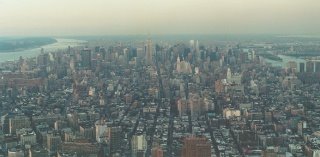Birders typically divide the year into seasons devoted to certain activities. May, for example, is a time when birders want to be out as much as possible and in as many habitats as possible to see and hear birds on their way north. June and July tend to be times for searching out breeding birds, especially for birders participating in breeding bird surveys and atlas projects. August is a month devoted to shorebird-seeking. September and October are great for finding many species as they make their way south to their wintering grounds. I could list more, but you get the point.
The southbound migration of September and October is perhaps most distinctive for the massive flights of hawks along the Eastern Seaboard. Hawks migrate in other months as well, but the largest concentrations of raptors will be found in mid to late September. Among the most common hawks in the early stage of migration is the broad-winged hawk.
Broad-winged hawks are small for buteos: 15 inches long with a 34-inch wingspan (compared to 19 inches and 49 inches for red-tailed hawks). Adults may be distinguished in flight by their broad black-and-white tail bands, the dark edging around their wings, and the overall paleness of their undersides. Immature broad-wings do not show the tail bands but do have the dark edging around the undersides of their wings. During the breeding season, they nest in forests and may be hard to find. During their autumnal flights to Central and South America, they become far more apparent.

During migration, broad-winged hawks are notable for engaging in a practice known as "kettling." Large groups will migrate together; when they gather, the rising and falling motion of individual hawks gives the appearance of bubbles in a boiling kettle of water. This activity is not merely a sign of sociability; it is an important part of their migration flight. Unlike passerines, which migrate at night, hawks depend upon thermals and updrafts to minimize the work they need to do to stay aloft. Hawks use these to rise high in the air, and then glide onward until they meet another thermal, and repeat the process. "Kettles" usually occur where there happens to be a strong rising stream of air. (For photos of broad-winged hawks in flight, including a kettle, see
here.)
The premier hawk-watches in the Mid-Atlantic are
Cape May and
Hawk Mountain. There are also many other good sites. While they may not have the volume of the premier sites, each makes for a good show. Many great sites for hawk watching are located along the peaks of the Blue Ridge in Virginia; DL Ennis has a list of such sites
here.
Rockfish Gap, for example, maintains hawk counts each migration season; last year that count recorded over 10,000 hawks during fall migration, dominated by over 7,000 broad-winged hawks. A list of hawk watching sites in Maryland can be found at the
MOS website. In addition to the sites on that list, Point Lookout State Park, where the Potomac River and Chesapeake Bay converge, is productive for hawk watching under the right conditions. Several good spots lie along the Eastern Shore, notably Kiptopeke State Park in Virginia.
Unfortunately, Washington, D.C., does not have a high-quality hawk watch location. However, if you keep your eye on the sky, you are sure to see at least a few migrants on good days. To do your own hawk watch, choose a location that is somewhat elevated and has good sightlines in all directions. You may or may not see broad-wings, but you should see a variety of raptors.
Crossposted at
Blue Ridge Gazette.






















